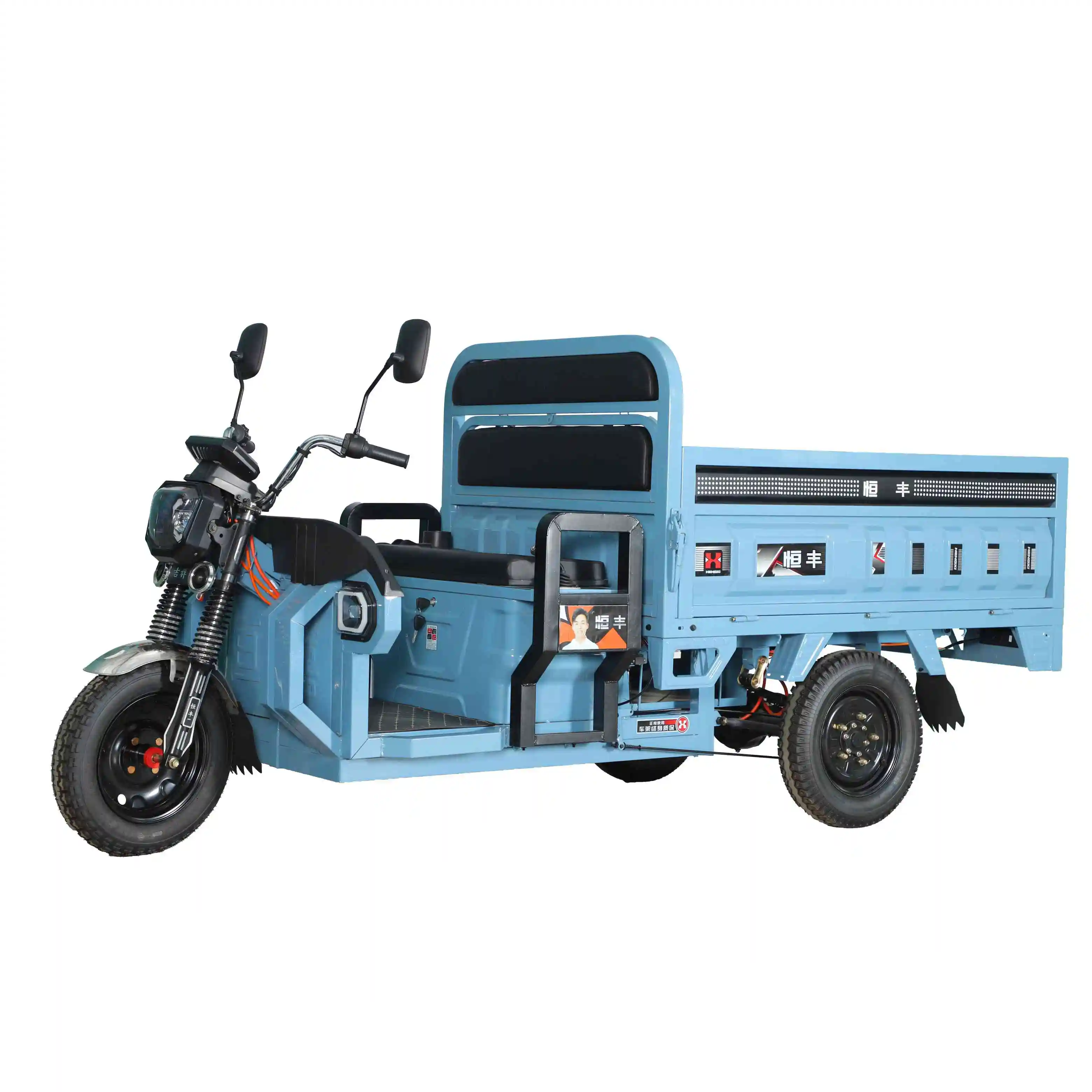The Evolution of Personal Electric Transportation
As urban mobility continues to transform, electric tricycles have emerged as a groundbreaking solution that combines the eco-friendly benefits of electric vehicles with enhanced stability and safety features. The electric tricycle represents a significant advancement in personal transportation, offering riders a secure and reliable alternative to traditional two-wheeled options. With their innovative design and cutting-edge technology, these three-wheeled vehicles are revolutionizing how people navigate their daily commutes and leisure rides.
The growing popularity of electric tricycles stems from their unique ability to address common safety concerns associated with conventional bicycles and electric bikes. Their distinctive three-wheel configuration provides inherent stability that makes them particularly appealing to riders of all ages and abilities. As we delve deeper into the safety advantages of electric tricycles, we'll explore how their design features and technological innovations contribute to a more secure riding experience.

Superior Stability and Balance Features
Three-Wheel Architecture Advantages
The fundamental design of an electric tricycle incorporates three points of contact with the ground, creating a naturally stable platform that virtually eliminates the risk of tipping over. This triangular base provides exceptional balance, especially when stopping or traveling at low speeds – situations where two-wheeled vehicles are most vulnerable to accidents. The wider stance of electric tricycles ensures that riders can maintain their balance without the constant need to adjust their position or put their feet down at stops.
Additionally, the three-wheel configuration distributes weight more evenly across the vehicle, reducing the likelihood of skidding or losing control on various surface conditions. This enhanced stability is particularly beneficial when navigating turns, where the risk of losing balance is typically highest on traditional two-wheelers.
Dynamic Weight Distribution System
Modern electric tricycles feature sophisticated weight distribution systems that automatically adjust to maintain optimal balance during different riding conditions. The placement of the battery and motor components is strategically designed to lower the center of gravity, further enhancing stability and handling characteristics. This thoughtful engineering ensures that the electric tricycle remains planted and secure, even when carrying cargo or traversing uneven terrain.
Advanced Safety Technology Integration
Intelligent Braking Systems
Electric tricycles are equipped with advanced braking mechanisms that provide superior stopping power compared to traditional two-wheelers. The multi-wheel design allows for the implementation of independent braking systems on each wheel, ensuring more controlled and efficient deceleration. Many models feature regenerative braking technology, which not only enhances safety but also extends the vehicle's range by recovering energy during braking.
The incorporation of anti-lock braking systems (ABS) in premium electric tricycle models further improves safety by preventing wheel lock-up during emergency braking situations. This technology allows riders to maintain steering control while braking, significantly reducing the risk of accidents in challenging conditions.
Electronic Stability Control
Modern electric tricycles often include sophisticated electronic stability control systems that continuously monitor riding conditions and make real-time adjustments to enhance safety. These systems can detect potential instability and automatically modify power delivery to maintain optimal control. The integration of sensors and intelligent software helps prevent wheel spin and maintains traction in various weather conditions.
Enhanced Rider Comfort and Control
Ergonomic Design Elements
The design of electric tricycles prioritizes rider comfort through carefully considered ergonomic features. The upright seating position reduces strain on the back and shoulders while providing excellent visibility of surrounding traffic. Wide, comfortable seats with proper support eliminate the need for constant balance adjustments, allowing riders to focus more on their surroundings and potential hazards.
The thoughtful placement of controls and displays ensures that all essential functions are easily accessible without compromising the rider's attention to the road. This ergonomic approach significantly reduces rider fatigue and enhances overall safety during longer journeys.
Intuitive Control Systems
Electric tricycles feature user-friendly control interfaces that make operation simple and intuitive. The power assistance can be easily adjusted to match rider preferences and road conditions, while clear displays provide essential information about speed, battery level, and system status. These well-designed control systems help riders maintain better awareness of their vehicle's performance and capabilities.
Weather Resistance and All-Season Safety
Enhanced Traction Control
Electric tricycles excel in challenging weather conditions thanks to their superior traction capabilities. The three-wheel design provides better grip on wet or slippery surfaces, while advanced tire technologies and tread patterns ensure reliable performance in various weather conditions. The wider contact patch with the road surface significantly reduces the risk of sliding or losing control during adverse weather.
Weather Protection Features
Many electric tricycle models come with built-in weather protection features that enhance safety during inclement conditions. These may include fenders over all wheels, splash guards, and optional weather enclosures that protect both rider and critical electronic components from the elements. These features ensure consistent performance and reliability regardless of weather conditions.
Frequently Asked Questions
How does the turning radius of an electric tricycle compare to a two-wheeler?
While electric tricycles generally require a slightly wider turning radius than two-wheelers, their enhanced stability during turns more than compensates for this difference. The three-wheel design allows for confident cornering without the risk of losing balance, making them particularly suitable for urban environments with frequent turns.
Can electric tricycles be used safely by seniors or individuals with mobility challenges?
Electric tricycles are exceptionally well-suited for seniors and those with mobility issues due to their inherent stability, comfortable seating position, and easy-to-use controls. The elimination of balance concerns makes them an ideal choice for maintaining independence and active lifestyle without compromising safety.
What maximum speed can be safely achieved on an electric tricycle?
Most electric tricycles are designed to operate safely at speeds between 15-20 mph, though some models may be capable of higher speeds. The three-wheel design and advanced safety features ensure stable operation within these speed ranges, while built-in speed limiters help prevent unsafe operation.

